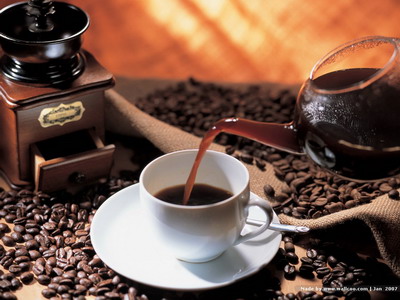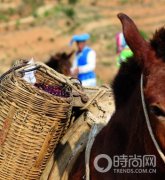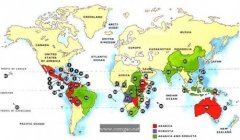Overview of Jamaica Blue Mountain Coffee Producing Area

Almost anyone who has heard of Jamaican Jamaica Blue Mountain coffee knows that it is the most expensive coffee in the world. But not everyone knows why. Like Rolls-Royce cars and Stradivari violins (Stradivarius Violin), when something gains the reputation of "the best in the world", that reputation tends to make it its own identity and become an everlasting myth.
It is necessary to carefully understand the myth of Blue Mountain Coffee, because the image of the past is often inconsistent with the reality of today. In 1725, Sir Nicholas Sir Nincholas Lawes brought the first blue mountain coffee trees from Martinique to Jamaica and planted them in St. Andrew) region. Today, St. Andrews is still one of the top three producers of Blue Mountain Coffee, with the other two being Portland and St. Thomas) origin. In eight years, Jamaica exported more than 375 tons of pure coffee. In 1932, coffee production reached its peak and more than 15000 tons of coffee was harvested.
However, by 1948, the quality of coffee had declined and Canadian buyers refused to renew their contracts, so the Government of Jamaica established the Coffee Industry Committee to save the fate of top coffee, and by 1969 the situation had improved. because the use of Japanese loans to improve the quality of production, thereby ensuring the market. Even in 1969, Japanese coffee drinkers were willing to pay insurance for the coffee. By now, this kind of coffee has reached the point of being feverishly loved.
Blue Mountain Coffee is one of the most advantageous coffee growing conditions in the world. Jamaica's weather, geological structure and topography provide a unique ideal place. The ridge that runs through Jamaica extends to the eastern part of the island, with the Blue Mountains rising to more than 2100 meters. Cool weather, foggy, frequent precipitation, use this rich soil Rain Water to reconcile. Here, a mixed planting method is used to grow coffee trees to accompany banana trees and avocado trees on terraces.
As Japan has always invested in the Jamaican coffee industry, the cultivation of Blue Mountain Coffee is now mostly controlled by the Japanese, and there is no doubt that they have also won the right of priority to buy Blue Mountain Coffee. In 1992, Jamaica sold 688 tons of Blue Mountain coffee to Japan, 75 tons to the United States and 59 tons to Britain. Now, 90% of the harvested Blue Mountain coffee is bought by the Japanese. Now, because the rest of the world can only get 10% of Blue Mountain, regardless of the price, Blue Mountain coffee is always in short supply. In the UK, Langford Brothers Brothers has been the only supplier for many years. Later, the Edmunds Group (Edmonds Group) also received a supply from Jamaica's Salda Food Company (Salda Foods).
The difference in transportation between Blue Mountain Coffee and other coffee is that it is transported in a 70kg barrel, a replica of the Bonifieur barrel produced in Guadeloupe in the last century, which was originally used to carry flour from England to Jamaica, usually with a trademark and the name of the manufacturer. The Coffee Industry Council issues certificates for all authentic Jamaican coffee and stamps the exporters with approval stamps.
The Jamaican government used to insist that all Blue Mountain coffee is roasted in Jamaica to ensure that the quality remains the same. In fact, baking is a fine art, and it takes experience, training and expensive facilities to do a good job. From the consumer's point of view, coffee beans should be obtained and drunk immediately after baking. Coffee roasting in Jamaica is unlikely to meet this requirement. Now raw coffee beans from Jamaica can be exported.
From the above we can understand the general production of Blue Mountain Coffee, what we need to pay attention to is the Blue Mountain 99 that can be drunk in China. 9% of them are only grown near the Blue Mountain Mountains, and only coffee produced in 6000 hectares above 1600 meters above sea level can be called Blue Mountain, and the output is always below 900t. According to the principle of 10% supply to the world outside Japan, do you think this kind of coffee, which can only be consumed by the world at an annual rate of 90 tons, can be drunk in any domestic cafe for dozens of yuan?
The best Blue Mountain Coffee is undoubtedly one of the best coffee you can drink. Although the price can ensure an adequate supply of Blue Mountain coffee, it does not guarantee the best flavor of the coffee. It is also worth noting that this kind of coffee tastes much more expensive than it looks. If you want to taste its best flavor, you have to put more coffee beans than other coffee, otherwise the flavor will not live up to its name, so the real cost of reflecting the flavor is that it has to add 10% to 15% more coffee beans than the coffee whose price is inferior to it.
The real Blue Mountain Coffee is made from the best local raw coffee beans, which is the official pleasure of tasters. Its flavor is rich, balanced, fruity and sour, and can meet people's various needs. In addition, the flavor of high-quality fresh Blue Mountain coffee is particularly long-lasting, as drinkers say-endless aftertaste.
The world-famous Blue Mountain Coffee comes from the Blue Mountains of Jamaica. The caffeine content of Blue Mountain Coffee is very low, which is less than half of that of other coffees, which is in line with the modern concept of health.
Important Notice :
前街咖啡 FrontStreet Coffee has moved to new addredd:
FrontStreet Coffee Address: 315,Donghua East Road,GuangZhou
Tel:020 38364473
- Prev

Cross Gaoligong to Qiu Gonggong Coffee Manor
More than 100 years ago, missionaries from the West followed the caravan team to grow coffee with pure Arabica ancestry on this land in Yunnan after climbing Mount Gaoligong. For me, coffee is a clue, and it is as interesting as the introduction of Catholicism, Christianity and wine to Yunnan. The blue river flows against the huge mountains, and its momentum reminds me of western Sichuan.
- Next

Coffee flavors from different coffee producing areas around the world
Costa Rican coffee has full grains, ideal acidity and unique strong aroma. Tarrazu of Costa Rica is one of the major coffee producing areas in the world. Costa Rica, with its fertile volcanic soil and good drainage, is the first country in Central America to grow coffee and bananas for commercial value. Coffee and bananas are
Related
- Does Rose Summer choose Blue, Green or Red? Detailed explanation of Rose Summer Coffee plots and Classification in Panamanian Jade Manor
- What is the difference between the origin, producing area, processing plant, cooperative and manor of coffee beans?
- How fine does the espresso powder fit? how to grind the espresso?
- Sca coffee roasting degree color card coffee roasting degree 8 roasting color values what do you mean?
- The practice of lattes: how to make lattes at home
- Introduction to Indonesian Fine Coffee beans-- Java Coffee producing area of Indonesian Arabica Coffee
- How much will the flavor of light and medium roasted rose summer be expressed? What baking level is rose summer suitable for?
- Introduction to the characteristics of washing, sun-drying or wet-planing coffee commonly used in Mantenin, Indonesia
- Price characteristics of Arabica Coffee Bean Starbucks introduction to Manning Coffee Bean Taste producing area Variety Manor
- What is the authentic Yega flavor? What are the flavor characteristics of the really excellent Yejasuffi coffee beans?

